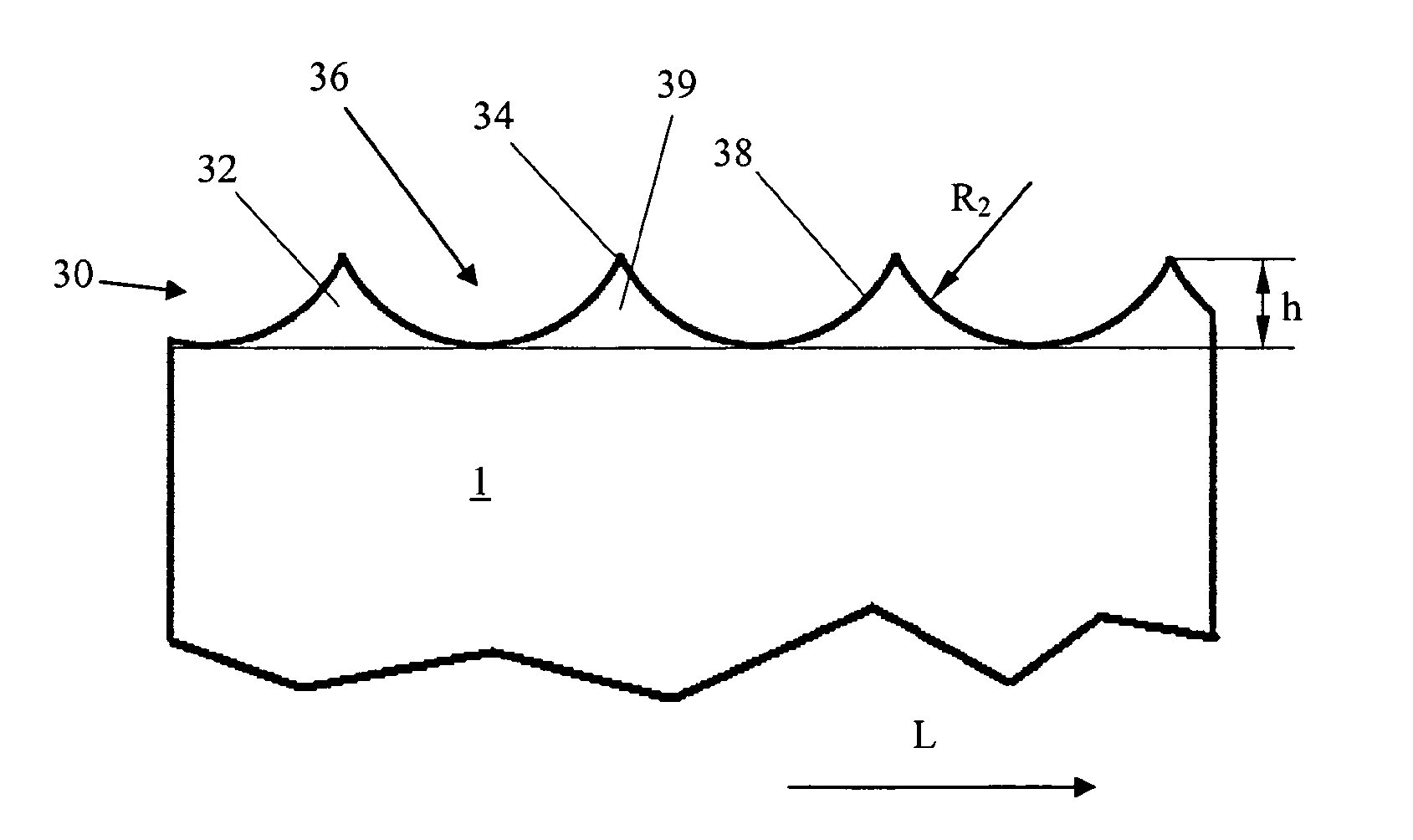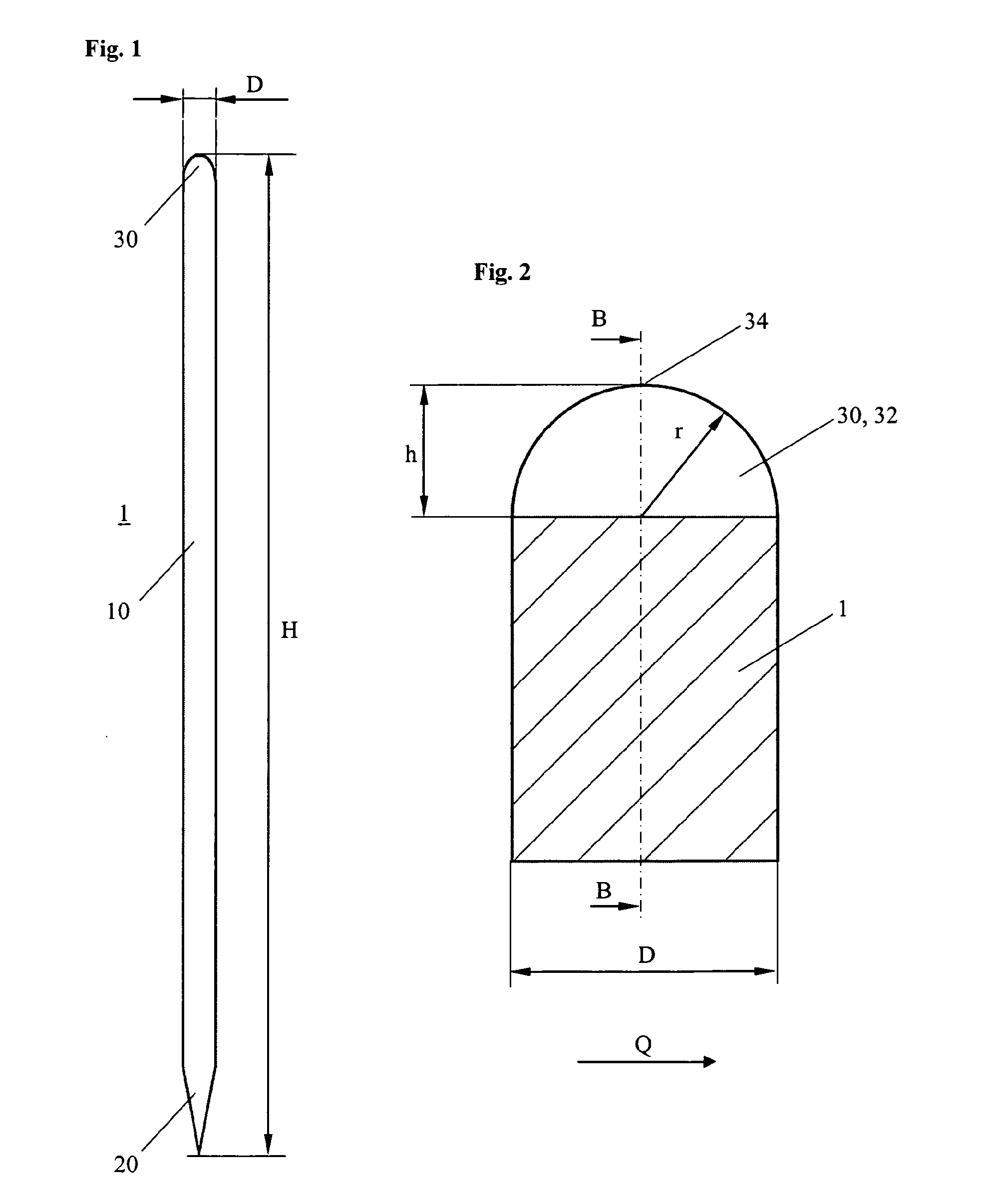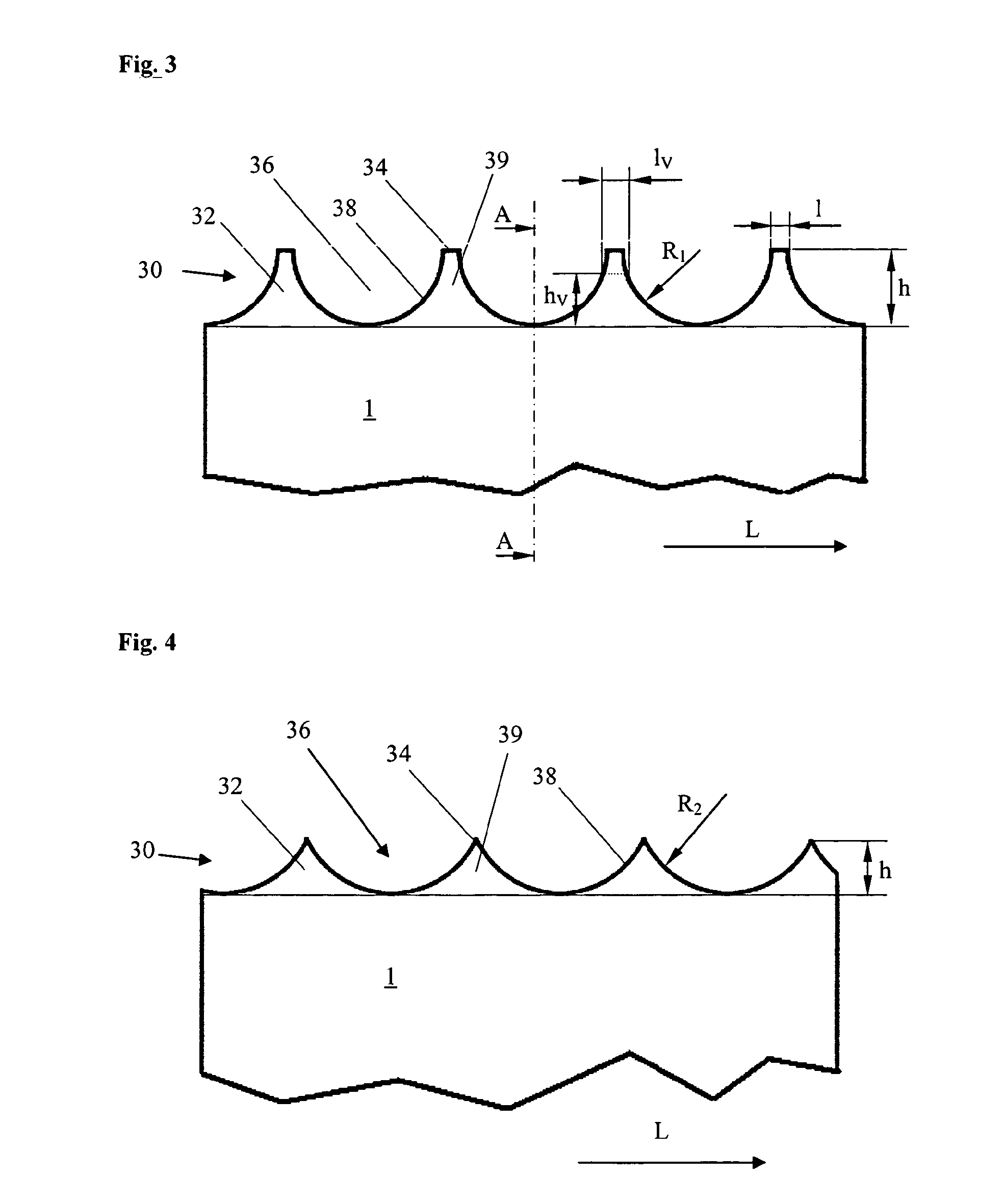Cutting rules for cutting of flat materials
a cutting rule and flat material technology, applied in the direction of saw chains, sawing machines, metal working machines, etc., can solve the problems of insufficient use of flat bed stamping machines, high labor intensity, and time-consuming iterative levelling process, so as to facilitate the introduction of cutting rules into the slots of carrier plates, facilitate the precise definition of plastic deformation, and facilitate the effect of levelling
- Summary
- Abstract
- Description
- Claims
- Application Information
AI Technical Summary
Benefits of technology
Problems solved by technology
Method used
Image
Examples
Embodiment Construction
[0044]In the following, preferred embodiments of the present invention are described in detail with reference to the figures.
[0045]FIG. 1 shows a first embodiment of a cutting rule 1 according to the invention. The cutting rule 1 essentially consists of a flat steel band 10 with a height H in the range of approximately 8 to 100 mm, a thickness D in the range of 0.45 to 2.13 mm (1.3 to 6 pt), an arbitrary length and a cutting edge 20. Special geometries of the cutting rules—as mentioned above—have other edge shapes 20 and are also subject matter of the present invention.
[0046]Opposed to the cutting edge 20, there is the back 30 of the steel band 10, respectively of the cutting rule 1, which in a preferred embodiment is rounded. In the shown embodiment, the back 30 is semi-circular rounded and has a rounding radius r which corresponds essentially to half of the thickness D of the steel band 10.
[0047]In FIG. 2, a section through the area of the back 30 is shown in detail. Here, particu...
PUM
| Property | Measurement | Unit |
|---|---|---|
| depth | aaaaa | aaaaa |
| thickness | aaaaa | aaaaa |
| thickness | aaaaa | aaaaa |
Abstract
Description
Claims
Application Information
 Login to View More
Login to View More - R&D
- Intellectual Property
- Life Sciences
- Materials
- Tech Scout
- Unparalleled Data Quality
- Higher Quality Content
- 60% Fewer Hallucinations
Browse by: Latest US Patents, China's latest patents, Technical Efficacy Thesaurus, Application Domain, Technology Topic, Popular Technical Reports.
© 2025 PatSnap. All rights reserved.Legal|Privacy policy|Modern Slavery Act Transparency Statement|Sitemap|About US| Contact US: help@patsnap.com



